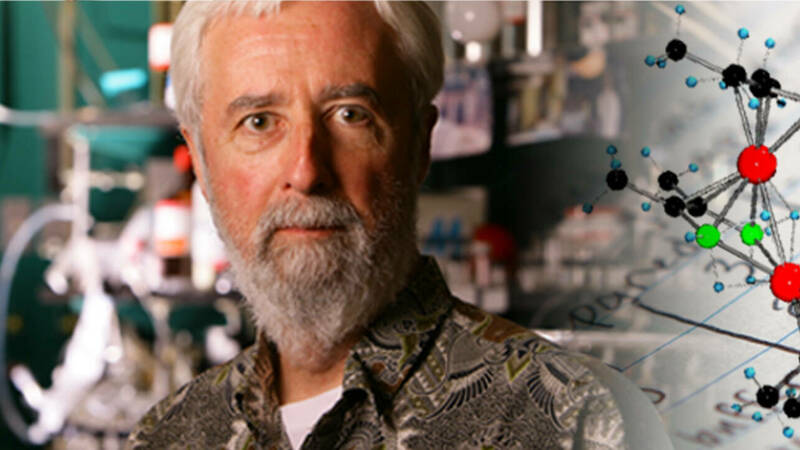
Thomas Fehlner
Professor Emeritus
Prospective Graduate Students
Biography
After graduating from Siena College in 1959, Professor Fehlner obtained his Ph.D. in physical chemistry in 1963 at Johns Hopkins University. Professor Fehlner joined the department in 1964. He was selected as a German Academic Exchange Service (DAAD) Scholar in 1982, was elected Fellow of the American Association for the Advancement of Science in 1985, was named a Guggenheim Fellow for 1988-89, received an award for Distinguished Achievements in Boron Science in 1990, was elected a member of the Johns Hopkins Society of Scholars in 1992 and held a Japan Society for the Promotion of Science Fellowship during the fall of 1992.
Research Interests
A Systematic Chemistry of Metallaboranes.
The reaction of monocyclopentadienyl metal halides or hydrides with monoboranes provides a general route to metallaboranes containing from one to three transition metals and one to ten boron atoms. Characterized by incorporation of transition metals from groups 5-9, good yields, and considerable control of stoichiometry via monoborane source as well as subsequent cluster building reactions, this method provides both new cluster types as well as an entrée to systematic reaction chemistry. Series of hypoelectronic clusters of tungsten, rhenium and ruthenium provide definitive examples of the manner in which the so-called “t2g“ transition metal orbitals can participate in cluster bonding and the consequent geometric perturbation of cluster shape.
Contrasts with organometallic chemistry are found in studies of the reactions of group 8 and 9 nido-dimetallapentaboranes with a set of internal and terminal alkynes. For ruthenium mild reaction conditions permit the isolation of metastable products containing metal-boron bridging alkylidenes resulting from alkyne hydrometallation or bridging borenes resulting from framework alkyne insertion and borene extrusion. These intermediates are subsequently converted into more stable metallacarboranes of novel types.In dramatic contrast, for the isoelectronic rhodaborane catalytic alkyne cyclotrimerization is the dominant reaction pathway. These and other reactions illustrate the control of chemistry provided by joining one or more transition metals to a borane fragment within a cluster framework.
Molecular Expression of Quantum Cellular Automata.
In the utilization ever smaller device components, it was only a matter of time that dimensions in the realm of molecules would be addressed. But life in molecular dimensions marches to a different drummer than that of the macroscopic world. Hence, just as the larger building blocks of logic devices depend on the properties of the macroscopic materials from which they are constructed, so too the utilization of molecules for electronic devices should be based on molecular properties. Quantum cellular automata (QCA) is a method for the design of electronic devices in which information stored in structured charge containers is transmitted via coupled electric fields rather than electron currents.
The principles of QCA have been developed theoretically and the essential features of the method demonstrated experimentally with 50 nm quantum dots at near 0 K. In order to operate, state energy differences must be greater than kT and molecule-sized QCA devices (2 nm) are predicted to operate at room temperature. A QCA cell containing two quantum dots becomes a mixed-valence complex when scaled to molecular sizes. Our work addresses two properties required for the utilization of mixed-valence complexes in molecular QCA specifically: (a) stable monolayers of vertical, covalently bound, dinuclear mixed-valence complexes on a Si(111) surface can be switched between the two possible states; and (b) square arrays of complexes containing four metal redox centers with two mobile charges are practical building blocks for molecular QCA circuits. This work is described in a series of publications which can be found on this site.
Selected Publications
- "Building Blocks for the Molecular Expression of Quantum Cellular Automata. Isolation and Characterization of a Covalently Bonded Square Array of Two Ferrocenium and Two Ferrocene Complexes," J. Jiao, G. J. Long, F. Grandjean, A. M. Beatty and T. P. Fehlner, J. Am. Chem. Soc., 125, 7522 (2003).
- "Molecular QCA Cells. Electric Field Driven Switching of a Silicon Surface Bound Array of Vertically Oriented Two-Dot Molecular Quantum Cellular Automata”, Hua Qi, Sharad Sharma, Zhaohui Li, Gregory L. Snider, Alexei O. Orlov, Craig S. Lent and Thomas P. Fehlner, J. Am. Chem. Soc., 125, 15250 (2003).
- "Cooperative Metal-Boron Interactions in the Reaction of nido-1,2-(Cp*RuH)2B3H7 with HCâ¡CPh”, Hong Yan, Bruce C. Noll, and Thomas P. Fehlner, J. Am. Chem. Soc., 127, 4831 (2005).
- "Synthesis and Characterization of [exo-BH2(Cp*M)2B9H14] (M = Ru, Re), and the Conversion of the Ruthenaborane into [(Cp*Ru)2B10H16] with an Open Cluster Framework Based on a Capped Truncated Tetrahedron”, Sundargopal Ghosh, Bruce C. Noll, and Thomas P. Fehlner, Angew. Chem. Int. Ed., 44, 2916 (2005).
- "Borane Mimics of Organometallic Paradigms: Synthesis and Characterization of Isoelectronic Analogs of Dinuclear Pentalene Complexes, [(Cp*Ru)(B8H14)(RuCp*)]0,+1", Thomas Fehlner, Sundargopal Ghosh, Bruce C. Noll, and Thomas Fehlner, Angew. Chem. Int. Ed., 44, 6568 (2005) Link
- Heterobimetallic Metallaborane Chemistry: Synthesis and Characterization of a “Lightly Stabilized” Molybdairidahexaborane [{Cp*Ir}{(CO)3(THF)Mo}B4H8] and Its Direct Conversion to [{Cp*Ir}{(CO)3(L)Mo}B4H8], L = CO, PPh3, NCPh, CNBu, NH3, PPh3=CHC(O)OMe", Organometallics, 23, 5994 (2004).